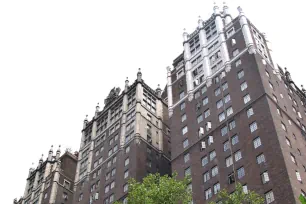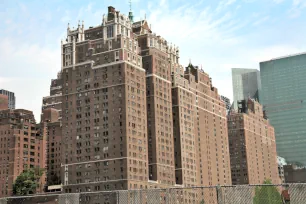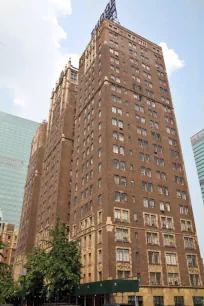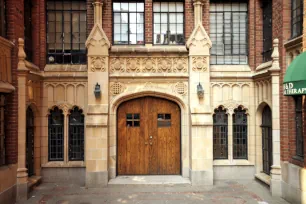Tudor City is a historic district in Midtown Manhattan developed in the 1920s by Fred F. French. It comprises twelve buildings in Tudor style.


In the 1920s, the Fred F. French company started to buy lots on the east side of Midtown Manhattan for a large housing project. The run-down area consisted mostly of tenements and brownstone houses, bordered on the east by a gas company, breweries and slaughterhouses, causing filth and an unbearable smell.
Tudor City
In 1925 Fred F French – also known for the Fred F. French Building and Knickerbocker village – started construction of what he called ‘The largest project in Midtown’. The project was named Tudor City.
Completed in 1928, it consisted of twelve apartment buildings containing 3,000 housing units and 600 hotel rooms. The design by the architect H. Douglas Ives and his team was based heavily on the Tudor Style, an architectural style prevalent during the Tudor Dynasty. Characteristic for this style is the brickwork and the application of fine, intricate stonework.

Attracting the Middle Class
In an effort to attract part of the middle class that had moved to suburban areas, the buildings featured many amenities and was well ahead of its time. It also boasted two private gardens in the center.
In order to shield the apartments from the slaughterhouses on the east side, the buildings all face inwards towards the parks and have very few windows on the east side. The slaughterhouses were eventually demolished in the 1940s to make way for the United Nations Headquarters.
Tudor City Today

Tudor City currently houses about 5,000 people, and most of the apartments and hotel rooms are now co-operative housing projects. It is based on a plateau that seems to isolate it from the rest of Midtown, creating a quiet refuge from hectic Manhattan.
A Historic District
The area became a historic district May 17, 1988. It comprises an area from 40th street to 43rd street between First and Second Ave.
- Next: Grant's Tomb
- More Sights & Attractions in New York

